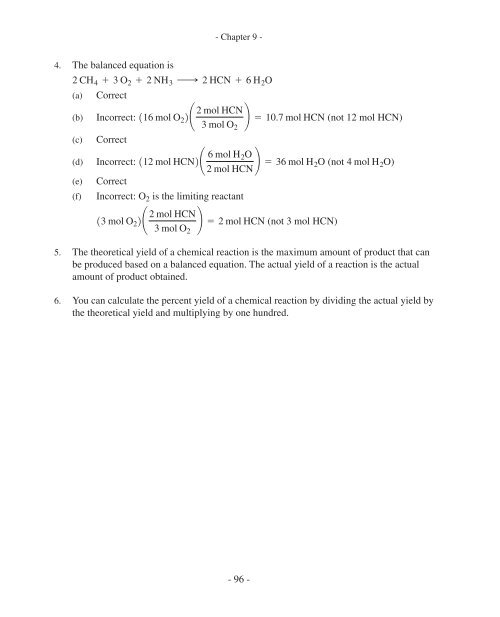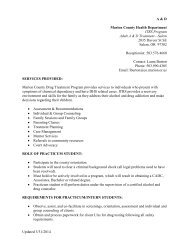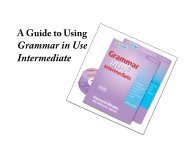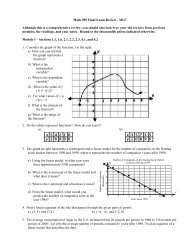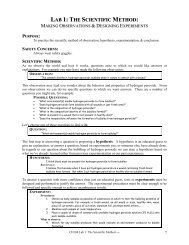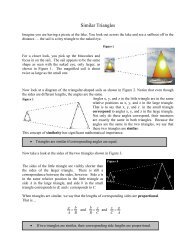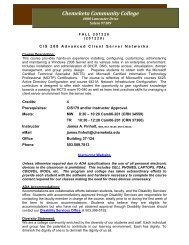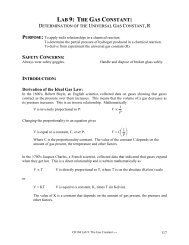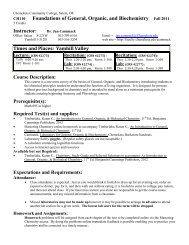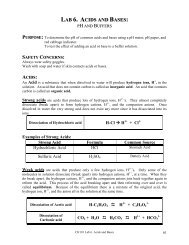You also want an ePaper? Increase the reach of your titles
YUMPU automatically turns print PDFs into web optimized ePapers that Google loves.
HEINS09-095-117v4.qxd 12/30/06 1:58 PM Page 96<br />
- <strong>Chapter</strong> 9 -<br />
4. The balanced equation is<br />
2 CH 4 + 3 O 2 + 2 NH 3 ¡ 2 HCN + 6 H 2 O<br />
(a)<br />
Correct<br />
2 mol HCN<br />
(b) Incorrect: 116 mol O 2 2¢ ≤ = 10.7 mol HCN (not 12 mol HCN)<br />
3 mol O 2<br />
(c)<br />
Correct<br />
(d) Incorrect: 112 mol HCN2¢ 6 mol H 2O<br />
(not 4 mol H 2 O)<br />
2 mol HCN ≤ = 36 mol H 2O<br />
(e) Correct<br />
O 2<br />
(f) Incorrect: is the limiting reactant<br />
2 mol HCN<br />
13 mol O 2 2¢ ≤ = 2 mol HCN<br />
3 mol O 2<br />
(not 3 mol HCN)<br />
5. The theoretical yield of a chemical reaction is the maximum amount of product that can<br />
be produced based on a balanced equation. The actual yield of a reaction is the actual<br />
amount of product obtained.<br />
6. You can calculate the percent yield of a chemical reaction by dividing the actual yield by<br />
the theoretical yield and multiplying by one hundred.<br />
- 96 -


